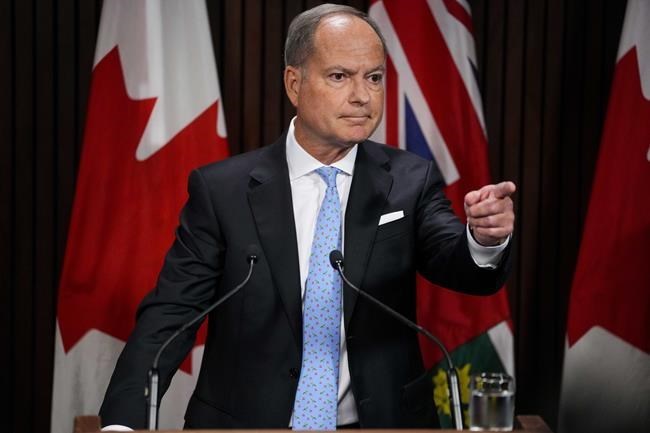TORONTO — Ontario will need more than 138,000 new workers in the public sector, long-term care, home care and child care over the next five years and may need to increase wages to attract enough people, the province's financial watchdog says.
The Financial Accountability Office released a report Wednesday on public sector compensation and said Ontario is already facing high vacancy rates in those sectors -- 8.5 per cent this year in nursing and residential care -- and will need to both address those immediate challenges and ensure there are enough workers to fulfil its promises for the future.
The Progressive Conservative government has committed to building 30,000 new long-term care beds by 2028 and increasing the daily hours of direct care, as well as expanding the home care system and creating 71,000 new child-care spaces as part of the incoming $10-a-day program.
But overall, public-sector wage growth in Ontario is below inflation and below average raises in the private sector, as well as municipal and federal employees in the province, the report said.
"As higher wages attract entry into the workforce from other sectors, provinces or countries, or by those recently retired or out of the workforce due to other reasons, the province may need to increase wages beyond the FAO’s base case assumption, to ensure sufficient staffing to maintain existing public services and meet program expansion commitments," the report said.
The government does have some flexibility, financial accountability officer Peter Weltman said at a press conference, noting Ontario just reported ending 2021-22 with a $2.1-billion surplus.
"There is some fiscal room to manage or to certainly try to address some of the risks that we've highlighted in this report," he said. "How the government chooses to use that fiscal room, of course, is up to the government."
Ian Allen, a spokesperson for Treasury Board President Prabmeet Sarkaria, touted the steps the government has already taken to recruit and retain health workers, saying 11,400 have been added to the system since the start of the pandemic.
"We’ll continue to make sure that we make the right investments where they’re needed so that the services Ontarians need and expect are there for them now and in the future,” Allen said in a statement.
Wage increases for most public sector workers have been constrained for the past few years under a law known as Bill 124, which caps raises at one per cent for a three-year period.
That law is set to save the province $9.7 billion on public-sector salaries and wages, the FAO said, though a court challenge could all but wipe that out. The province's Superior Court heard arguments earlier this month from public-sector unions challenging the law as unconstitutional, arguing it infringes on their collective bargaining rights. The judge reserved his decision.
If that law gets overturned and repealed, it could cost the province $8.4 billion over five years, including a potential $2.1 billion in retroactive payment to the majority of workers already affected by Bill 124. Contracts for about 30 per cent of public workers have not yet entered a three-year period of being affected by the bill.
Bill 124 was enacted in 2019 when the government was trying to eliminate a deficit, and interim NDP leader Peter Tabuns said the nearly $10 billion in projected savings will not have served Ontario well, suggesting the wage restraint is responsible for staffing shortages.
"If you've gone to an emergency room that's been closed, if you're one of the parents whose children is not getting pediatric surgery because of the backlog because the hospitals are understaffed, you are not going to see this as a good thing," he said.
Interim Liberal leader John Fraser said there are several reasons for staff shortages, but the government should still repeal Bill 124.
"Bill 124 is not the only reason we have this challenge, but it is something that's under the government's control and the government has stubbornly refused to do anything about it," he said.
Inflation could also lead to an additional $6.8 billion in provincial spending on Ontario public-sector employee salaries and wages through to 2026-27, the report said.
This report by The Canadian Press was first published Sept. 28, 2022.
Allison Jones, The Canadian Press

